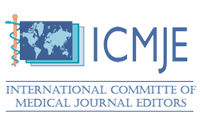COVID-19 Yoğun Bakım Hastalarında Serum Ürik Asit Düzeyinin Solunum Yetmezliğinin Ciddiyeti ve Mortalite Üzerine Etkisi
Ümmügülsüm Gaygısız, Lale KarabıyıkGazi Üniversitesi Tıp Fakültesi, Anesteziyoloji ve Reanimasyon Ana Bilim Dalı, Yoğun Bakım Bilim Dalı, Ankara, TürkiyeAmaç: Coronavirus hastalığı 2019 (COVID-19)’un klinik şiddeti ve mortalitesini tahmin etmede C-reaktif protein (CRP), prokalsitonin, ferritin, d-dimer gibi rutin laboratuvar parametreleri kullanılmaktadır. Bu parametrelerin sınırlı spesifiteleri ve hastalar arasındaki değişkenliği nedeniyle daha spesifik parametrelere ihtiyaç duyulmaktadır. Ürik asit düzeyleri ile COVID-19’un ciddiyeti ve mortalitesi arasında ilişki olabileceği düşünülmektedir. Bu çalışmada yoğun bakım ünitesinde (YBÜ) takibinin ilk 10 gününde yapılan günlük serum ürik asit ölçümleriyle invaziv mekanik ventilasyon (IMV) ihtiyacı ve mortalite arasındaki ilişkiyi retrospektif olarak araştırmayı hedefledik.
Yöntem: Etik komite onayı alınarak, YBÜ hasta kayıtları ve bilgisayardaki rutin laboratuvar verileri aracılığıyla uygun olan 151 hasta tarandı. Hastaneye ilk başvuruda ve YBÜ’de ilk 10 gündeki serum ürik asit ölçümleri, demografik ve klinik özellikleri, IMV ihtiyaçları ve mortaliteleri retrospektif olarak kaydedildi.
Bulgular: Yapılan analizde, IMV %60,3 ve mortalite %53,6 oranındaydı. Hastaneye ilk yatış anında ve yoğun bakım takibinde ölçülen ürik asit düzeyleri ile IMV ihtiyacı arasında anlamlı ilişki saptanmadı. Ölen ve yaşayan hasta grupları arasında yapılan karşılaştırmada; ölen grupta yoğun bakım 3. ve 4. gün ürik asit değerlerinin yaşayanlara göre daha yüksek olduğu saptandı (sırasıyla p=0.023, p=0.037).
Sonuç: Yoğun bakım ünitesine yatışı gerektiren COVID-19 hastalarında ürik asit düzeylerinde 3. ve 4. günlerde görülen yükselme mortalite tahmininde anlamlı gibi görünmektedir. Bu grup hastaların YBÜ izleminde serum ürik asit düzeyi prognoz tayininde yararlı bir parametre olabilir.
Anahtar Kelimeler: Yoğun bakım, ürik asit, COVID 19, mortalite, mekanik ventilasyon
Effect of Serum Uric Acid Level on Severity of Respiratory Failure and Mortality in COVID-19 Critical Patients
Ümmügülsüm Gaygısız, Lale KarabıyıkGazi University Faculty of Medicine, Department of Anesthesiology and Reanimation, Department of Intensive Care, Ankara, TurkeyObjective: Routine laboratory parameters such as C-reactive protein (CRP), procalcitonin, ferritin, d-dimer are used to estimate the clinical severity and mortality of Coronavirus disease 2019 (COVID-19). Because of the limited specificity of these parameters and their variability between patients, more specific parameters are needed. It is thought that there may be a relationship between uric acid levels and the severity and mortality of COVID-19. In this study, we aimed to retrospectively investigate the relationship between daily serum uric acid measurements in the first 10 days of follow-up in the intensive care unit (ICU) and the need for invasive mechanical ventilation (IMV) and mortality.
Methods: With the approval of the ethics committee, 151 eligible patients were screened through the ICU patient records and routine laboratory data on the computer. Serum uric acid measurements, demographic and clinical characteristics, IMV needs and mortality rates at the first admission to the hospital and in the first 10 days in the ICU were recorded retrospectively.
Results: In the analysis, rate of IMV was 60.3% and mortality was 53.6%. No significant correlation was found between the uric acid levels measured at the time of first hospitalization and in the ICU follow-up and the need for IMV. In the comparison between deceased and survived patient groups; the uric acid levels were found to be higher on the 3rd and 4th days of the ICU in the deceased group than in the survivors (p=0.023, p=0.037, respectively).
Conclusion: The increase in uric acid levels on the 3rd and 4th days in COVID-19 patients requiring ICU admission seems to be significant in the estimation of mortality. Serum uric acid level can be a useful parameter in determining the prognosis in the ICU follow-up of this group patients.
Keywords: Intensive care, uric acid, COVID 19, mortality, mechanical ventilation
Makale Dili: Türkçe
(428 kere indirildi)












